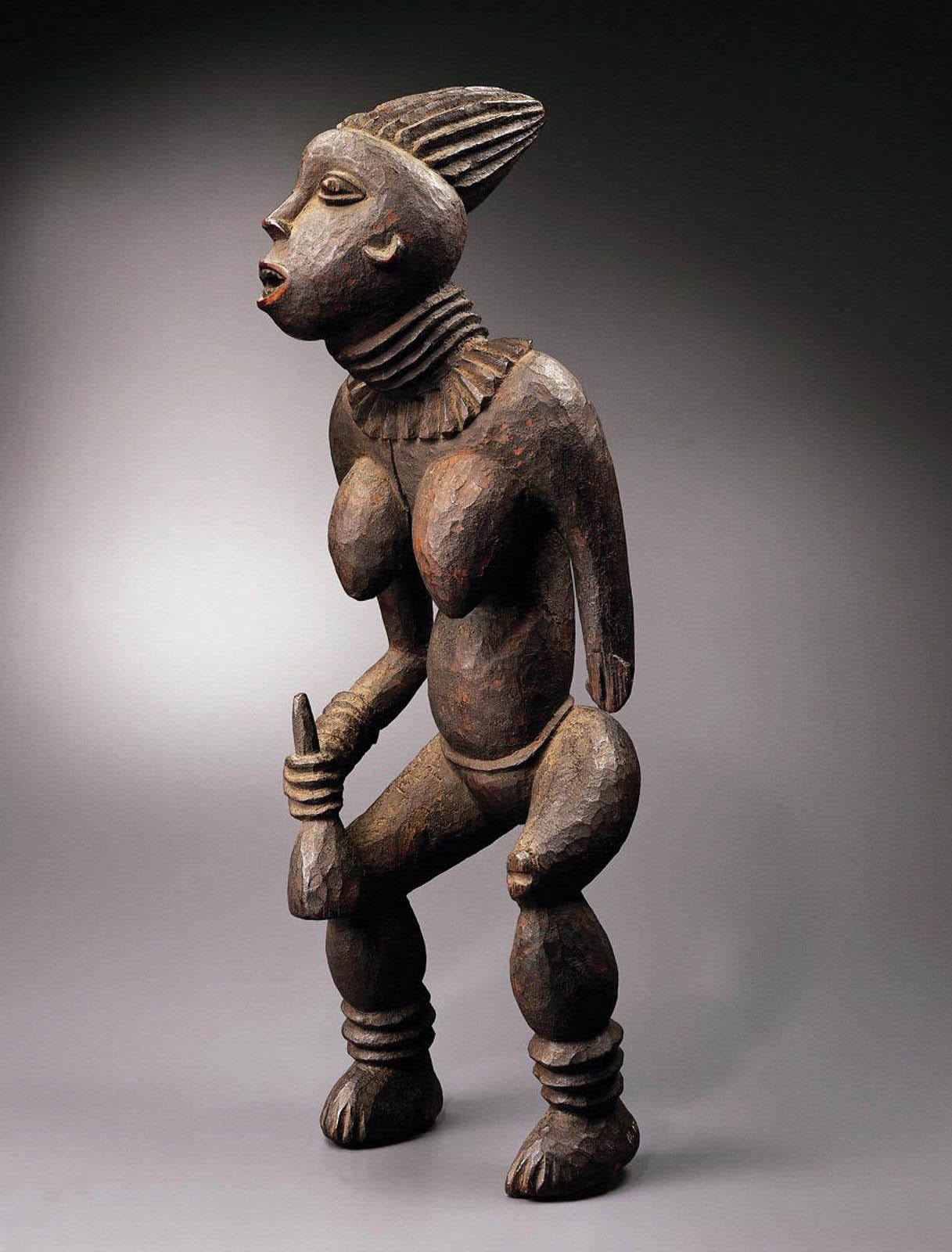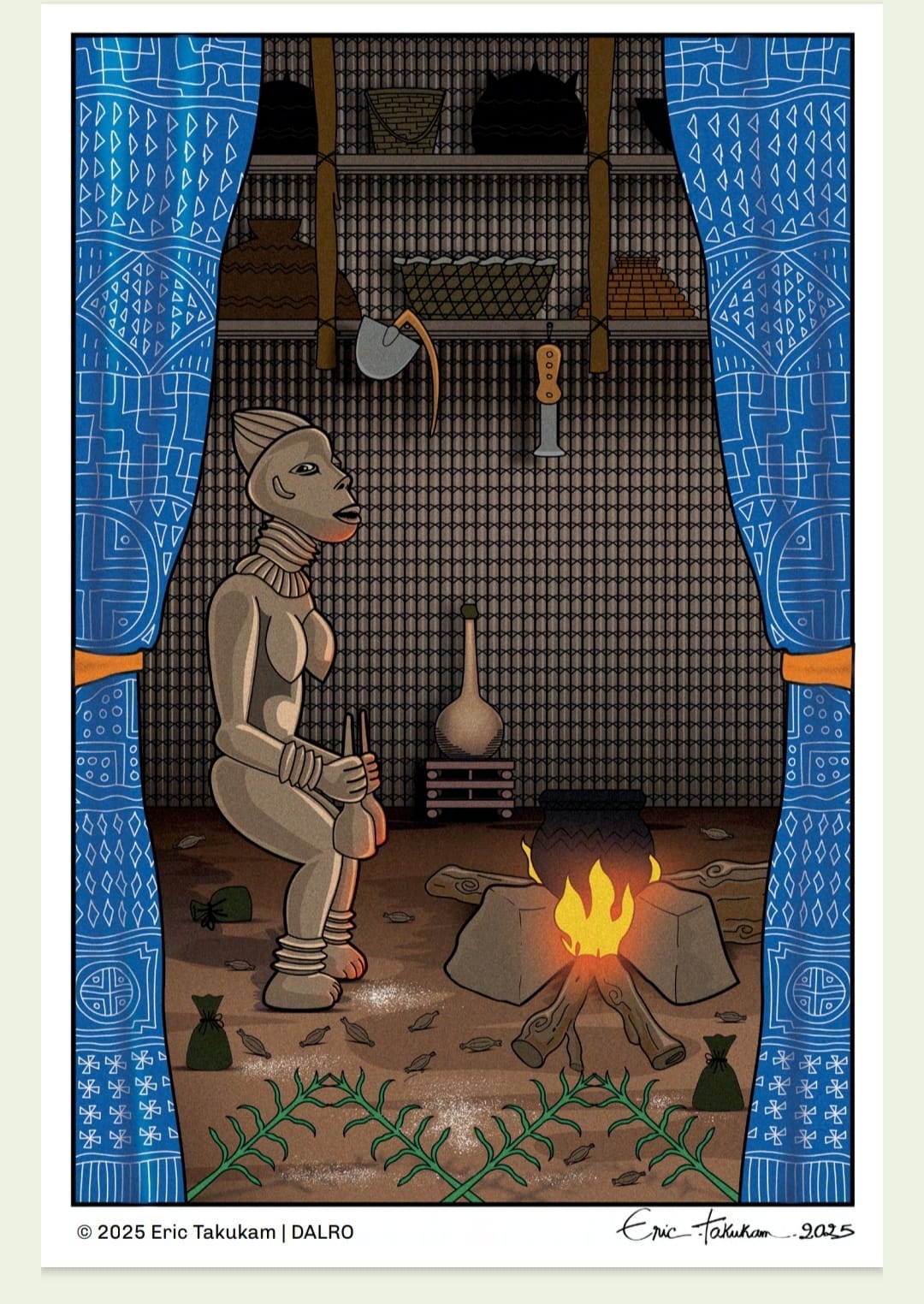Curated by Shola Lawal. Art direction by Wynona Mutisi
The Museum of Stolen History is a new series by The Continent that tells the stories of some of Africa's most significant artefacts.
This iconic, regal figure got its name – Bangwa Queen – from one of its possessors, Harry Franklin, who obtained her in 1966. But to her true owners, the Lebang of the rolling Bangwa grasslands in southwestern Cameroon, she is Ngwi Ndem, the divine spouse who intercedes for those seeking fertility, bountiful harvests, and protection against evil.
The wooden sculpture, at 82cm tall, is striking. She has an expressive face and a body in motion, perhaps dancing or singing, with a rattle in her one good arm. The predator tooth necklace and the brass bangles on her wrists and ankles denote a woman of nobility among the Bangwa.
Ngwi Ndem was sent to Europe by Gustav Conrau, a German trader and colonial agent. In 1898, Conrau was the first European to visit the Bangwa Mountains, where he sought trading contacts, as well as manual labour – slaves – for the deadly rubber and palm oil plantations of the then German-held Kamerun. Conrau was also mapping out the country, reporting potential banks of resources and hinterlands for future conquest by Berlin.
Conrau settled for several months with the Lebang. Their fon, or chief, Fontem Asonganyi, welcomed him at first. Some accounts have it that Asonganyi gifted or sold the wooden sculpture and several other artefacts to Conrau at this time.
But Chief Charles Taku, Asonganyi’s great-grandson and a lead counsel at the International Criminal Court, told The Continent that Conrau stole the sculpture, along with dozens of others, from a sacred forest called Lefem. Conrau returned to Bangwa a few months later in search of more labourers. But the fon grew angry, insisting the first group return first. In his notes, Conrau describes himself as being taken prisoner. He died by suicide in December 1899.
Believing Conrau was murdered, German authorities declared war on the Lebang. Their troops attacked communities and looted more sculptures. Asonganyi was captured several years later, and banished from the area.
Ngwi Ndem was recorded as a new addition to the National Ethnological Museum of Berlin in 1899. She has changed hands several times since, becoming a pop culture icon in 1935 after renowned artist Man Ray photographed her with a nude model for an edition of Paris magazine. She made news again in 1999 when she was auctioned a last time for a whopping $3.8-million. The purchase, by the Paris-based Dapper Foundation, which once ran a museum, made Ngwi Ndem the most valuable African artwork at the time.
She is still in the Dapper Foundation’s possession. Since 2017, Chief Taku has been writing to the organisation, seeking the queen’s freedom from what he says is enslavement. The Dapper Foundation has continued to assert its right of ownership, he says. The foundation did not respond to a request for comment.







